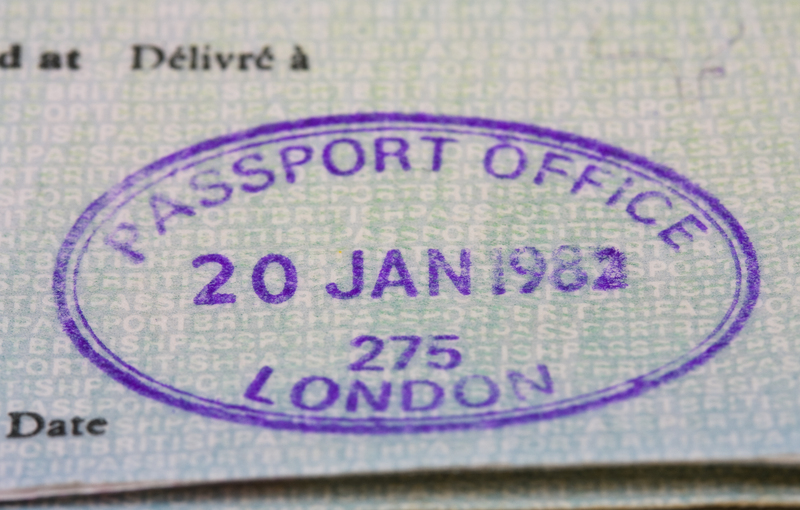Declutter and Conquer: Tactics for a Smooth Transition
Posted on 22/05/2025
Declutter and Conquer: Tactics for a Smooth Transition
Are you facing a significant life change such as a move, downsizing, or transitioning into a new stage of life? The key to making any transition less stressful is to declutter and conquer before you take the leap. Clutter can weigh you down emotionally and physically, making the process more difficult than it needs to be. This comprehensive guide provides expert decluttering tactics so your transition, whether it's moving house, starting fresh, or simply embracing minimalism, is seamless and fulfilling.
Why Declutter Before Any Transition?
Before we dive into actionable strategies, let's answer an important question: Why is it crucial to declutter before any major transition?
- Reduces Stress: A clutter-free environment eliminates the chaos that often accompanies transitions, keeping you calm and focused.
- Saves Time and Money: Less stuff means fewer things to pack, move, or manage, cutting transportation and storage costs.
- Provides Mental Clarity: Decluttering helps clear your mind, allowing you to make confident, prompt decisions during your transition.
- Facilitates an Easier Adjustment: Arriving at your new space with only essentials enables a smoother adaptation and a fresh start.
Understanding the benefits of decluttering helps motivate you to tackle this vital task. Here's how you can declutter and transition smoothly, step by step.

Planning Your Decluttering Strategy
1. Set Clear Goals and Deadlines
Before sorting a single drawer, establish clear, achievable goals. Do you want to reduce your possessions by half? Are you downsizing to a smaller space? Assign specific targets and set deadlines for every phase of your decluttering journey.
- Tip: Break your task into rooms or categories (clothes, books, kitchen items), with a mini-deadline for each.
2. Take Inventory of Your Belongings
A successful decluttering transition starts with understanding what you own. Walk through your home and list everything by room and function. This helps identify duplicates, redundancies, or items you no longer need.
3. Create Sorting Categories
A proven method to conquer clutter is to sort your items into defined categories:
- Keep: Essential, valuable, or sentimental items.
- Donate: Gently used goods that can benefit others.
- Sell: Valuable but non-essential possessions.
- Recycle: Items that can be processed into reusable material.
- Toss: Broken, unusable, or expired items.
Label your boxes or bags accordingly and stick to the system. Decision-making becomes faster and more objective.
Room-by-Room Decluttering Tactics
Each area of your home presents unique challenges. Here are actionable, room-focused decluttering tactics to ensure you declutter and conquer every corner.
Decluttering the Kitchen
- Discard expired food, broken gadgets, and duplicate utensils.
- Keep only what you use regularly--for example, limit mugs, pots, pans, and Tupperware to the number you truly need.
- Utilize drawer organizers to maximize space and maintain order.
Decluttering Bedrooms & Closets
- Sort clothing seasonally. If you haven't worn something in a year, consider donating or selling it.
- Store sentimental items in labeled bins or consider digitalizing keepsakes such as photos and cards.
- Maximize storage space with closet organizers and under-bed boxes.
Decluttering Living Areas
- Remove or store away items that don't serve a daily purpose (unused decor, magazines, gadgets).
- Keep surfaces clear--adopt a "one in, one out" rule for books, media, and games.
- Furniture should double as storage when possible to minimize clutter.
Decluttering the Bathroom
- Toss expired cosmetics, medications, and half-used toiletries.
- Utilize clear bins or stackable organizers for easy access and visual calm.
- Limit towels and linens to the number you actually need and use.
Emotional Aspects: Declutter Sentimental Items
One of the biggest obstacles in the decluttering process is dealing with items of sentimental value. Here are ways to respect your emotions while still conquering clutter:
- Set aside a special "memory box" for priceless mementos.
- Digitize keepsakes such as photos, letters, or children's artwork for eternal storage without physical clutter.
- Gift heirlooms to family members who will appreciate them.
- Remember, memories live in your heart, not just in objects.
Declutter and Conquer: Decluttering for a Move
Moving is one of life's biggest opportunities to declutter and transition smoothly. Here's how to break it down for ultimate efficiency:
Start Early
- Begin at least two months in advance, decluttering a little every day.
- Start with storage areas--basements, attics, garages, or sheds.
Use the Four-Box Method
- Mark four large boxes: Keep, Donate, Sell, Toss.
- Apply the method to every space--nothing should "stay for now."
Handle Items Only Once
- Make decisions as you go, rather than shuffling items repeatedly.
- If you hesitate, ask yourself: "Does this item earn the space it takes in my life?"
Organize as You Pack
- Pack similar items together, labeled clearly for quick unpacking.
- Consider color-coded labels for different rooms in your new home.
Decluttering for Life Transitions Beyond Moving
Declutter and conquer isn't just for moving house. Downsizing, welcoming a new family member, or pursuing a minimalist lifestyle all benefit from a clutter-free start. Here's how to adapt the process:
- Downsizing for Seniors: Evaluate space and accessibility in the new home--prioritize comfort and ease of movement, minimize excess furniture and decor.
- Family Growth: Create space for babies or new roommates by repurposing rooms and letting go of unused hobby items or bulky furniture.
- Embracing Minimalism: Focus on essentials, multi-functional furniture, and quality over quantity.
Overcoming Common Decluttering Challenges
Feeling Overwhelmed
- Start with a small area (your desk, a drawer, a nightstand).
- Use a timer (15-30 minutes), and stop when the timer goes off.
- Ask for help--friends or professionals can bring valuable objectivity.
Dealing with "What-If" Items
- If you haven't needed it in a year, you likely won't need it at all.
- Create a "maybe" box. If you don't retrieve items from it within six months, let them go.
Saying Goodbye to Gifts
- Focus on the sentiment, not the object. Your gratitude remains whether or not you keep the item.
- Re-gift or donate gently used items and help them find a new purpose.
Maximize Decluttered Spaces for a Smoother Transition
Once you've decluttered and conquered, set yourself up for ongoing success:
- Invest in proper storage solutions (shelves, bins, organizers).
- Label everything--future you will thank you!
- Establish a regular 10-minute routine to maintain order.
- Adopt the "one in, one out" rule moving forward.
Digital Decluttering: Don't Forget Your Tech!
In today's world, clutter isn't just physical. Digital clutter--old emails, duplicate files, unused apps--can slow down your devices and add unnecessary stress.
- Clean up your desktop and folders.
- Unsubscribe from unwanted newsletters.
- Back up essential files--delete the rest.
- Organize photos, documents, and passwords with cloud tools or secure digital vaults.
Long-Term Maintenance: Turning Decluttering Into a Habit
The ultimate goal is not just to declutter for a transition but to keep your space and life streamlined. Here's how:
- Quarterly Reviews: Schedule a "mini-declutter" session every three months to reassess your belongings.
- Shop Thoughtfully: Avoid impulse purchases by following the 24-hour rule before buying new items.
- Share the Load: Encourage household members to respect shared spaces by participating in decluttering routines.
- Reward Progress: Celebrate milestones--adopt positive reinforcement for sustained motivation.
Expert Tips: Supercharge Your Decluttering Process
- Take "before and after" photos for each room. Progress is motivating!
- Enlist professional organizers or moving consultants for major transitions.
- Hold a yard sale, donate to charity, or host a swap party--turn letting go into a positive event.
- Use tech apps to track progress, create checklists, and set reminders.
- Never declutter when you're tired or emotional; clarity yields better decisions.

Frequently Asked Questions About Decluttering and Transitioning
How long does a full-home declutter take?
For an average home, plan 1-3 weeks depending on your schedule and motivation. Larger homes or complex situations may require more time.
When should I start decluttering before a move?
The earlier, the better--ideally two months before your intended transition date. Small, steady progress beats overwhelming last-minute marathons.
Is it wasteful to throw items away?
Not if you've made a conscious effort to donate, recycle, or repurpose what you can. Anything that's unusable or unsellable should be discarded responsibly.
What if my family isn't on board?
Start with your own belongings to lead by example. Open discussions about the benefits (less stress, easier cleaning, a fresh start) can persuade hesitant family members to participate.
Conclusion: Declutter and Conquer for Every Transition
A smooth transition--whether moving, downsizing, or starting anew--starts with a determined approach to declutter and conquer. By setting clear goals, breaking big tasks into manageable steps, and creating sustainable habits, you'll not only streamline your next adventure but also create a harmonious, clutter-free life every day. Embrace the power of decluttering and see how seamlessly you can conquer any transition.
Now is the time to take action. Grab those boxes, set your goals, and confidently declutter and conquer for your next chapter!



